Pass Your Amazon AWS Certified Cloud Practitioner Exam Easy!
Amazon AWS Certified Cloud Practitioner Exam Questions & Answers, Accurate & Verified By IT Experts
Instant Download, Free Fast Updates, 99.6% Pass Rate
Amazon AWS Certified Cloud Practitioner Practice Test Questions in VCE Format
Amazon AWS Certified Cloud Practitioner Practice Test Questions, Exam Dumps
Amazon AWS Certified Cloud Practitioner (AWS Certified Cloud Practitioner (CLF-C01)) exam dumps vce, practice test questions, study guide & video training course to study and pass quickly and easily. Amazon AWS Certified Cloud Practitioner AWS Certified Cloud Practitioner (CLF-C01) exam dumps & practice test questions and answers. You need avanset vce exam simulator in order to study the Amazon AWS Certified Cloud Practitioner certification exam dumps & Amazon AWS Certified Cloud Practitioner practice test questions in vce format.
A Comprehensive Introduction to the Amazon AWS Certified Cloud Practitioner Certification
The world of technology is increasingly moving towards cloud-based infrastructure, making cloud literacy an essential skill for professionals across various industries. Amazon Web Services stands as a dominant force in this domain, offering a vast suite of services that power businesses globally. For individuals looking to begin their cloud journey, the AWS Certified Cloud Practitioner certification serves as the ideal starting point. This foundational certification is designed to validate a candidate's overall understanding of the AWS Cloud, its services, and its value proposition. It is not deeply technical but provides a comprehensive overview that is crucial for any role that interacts with the cloud.
This certification path is tailored for those who might be new to cloud computing or even new to the IT field altogether. It establishes a strong baseline of knowledge, covering the fundamental concepts of cloud computing, core AWS services, security and compliance, pricing models, and the available support options. Achieving the AWS Certified Cloud Practitioner credential demonstrates a commitment to understanding modern technology landscapes and can open doors to further learning and career advancement. It is the first step on a ladder that can lead to more specialized and technical AWS certifications, such as those for architects, developers, and operations professionals.
Understanding the AWS Certified Cloud Practitioner Exam
The AWS Certified Cloud Practitioner exam, identified by the code CLF-C02, is structured to assess your foundational knowledge of the AWS platform. The exam consists of multiple-choice and multiple-response questions, challenging you to identify correct answers from a set of options. It is a timed assessment, typically lasting 90 minutes, which requires both accuracy and efficient time management. The questions are scenario-based, designed to test your ability to apply your knowledge to real-world situations. This format ensures that certified individuals not only memorize facts but also understand the context in which AWS services operate.
Preparing for this exam requires a structured approach. Candidates should familiarize themselves with the exam guide provided by AWS, which outlines the specific domains and objectives covered. The exam is scored on a scale, and a passing score is required to earn the certification. It is important to note that there is no penalty for guessing, so it is always advantageous to answer every question. The content is regularly updated to reflect the latest advancements in the AWS ecosystem, ensuring that the certification remains relevant and valuable in the ever-evolving world of cloud technology.
Who Should Pursue This Certification?
The AWS Certified Cloud Practitioner certification is intentionally broad in its appeal, targeting a diverse audience. It is an excellent choice for individuals in non-technical roles such as sales, marketing, finance, and project management who need to communicate effectively with technical teams and customers about cloud-based solutions. By understanding the terminology and value of the AWS Cloud, these professionals can better articulate business benefits, understand project requirements, and contribute to strategic discussions involving technology. This shared language fosters better collaboration across different departments within an organization.
Furthermore, this certification is a logical first step for IT professionals who are new to the AWS ecosystem. Whether you are a system administrator, a developer, or a network engineer with a background in on-premises infrastructure, the AWS Certified Cloud Practitioner exam provides the fundamental knowledge needed to transition your skills to the cloud. It serves as a primer before diving into more specialized, role-based certifications like the AWS Certified Solutions Architect or Developer Associate. It helps build the confidence and foundational understanding required to tackle more complex technical challenges within the AWS environment.
The Evolution from CLF-C01 to CLF-C02
AWS is committed to keeping its certification exams current with the rapid pace of innovation on its platform. As a result, the AWS Certified Cloud Practitioner exam was updated from its original version, CLF-C01, to the current version, CLF-C02. This update reflects changes in the AWS service landscape and adjusts the focus of the exam domains to better align with current industry practices and the knowledge required for foundational cloud roles. The core concepts remain largely the same, but the new version places a refined emphasis on certain areas to ensure that certified professionals have the most relevant and up-to-date understanding.
The transition to CLF-C02 brought subtle shifts in the weighting of the exam domains. For example, there may be an increased focus on cloud security concepts and the financial aspects of using the cloud, such as billing and cost management tools. Candidates preparing for the exam should always ensure they are using study materials that are specifically aligned with the CLF-C02 version. Relying on outdated resources could lead to gaps in knowledge regarding new services or changed concepts. The official exam guide is the best source of information for understanding the precise breakdown and focus of the current exam version.
Core Skills Validated by the Certification
Earning the AWS Certified Cloud Practitioner certification validates a range of essential skills that are highly valued in the modern workforce. At its core, the certification confirms your ability to define what the AWS Cloud is and articulate its basic global infrastructure. You will be able to explain the key principles of AWS cloud architecture, including concepts like designing for failure and decoupling components. This architectural understanding is fundamental to building resilient and scalable applications on the platform. This credential proves you understand the language and foundational pillars of the world's leading cloud platform.
Beyond the technical basics, the certification heavily emphasizes the business value of the cloud. You will gain skills in describing the core value proposition of AWS, including the benefits of scalability, elasticity, cost savings, and speed to market. A significant portion of the exam is dedicated to security and compliance, ensuring you can explain the shared responsibility model, describe key security services, and understand the basics of access management. Additionally, you will be able to recognize and explain AWS billing, account management, and pricing models, which are critical skills for managing cloud costs effectively and making informed financial decisions.
Navigating the Four Key Exam Domains
The AWS Certified Cloud Practitioner exam content is organized into four distinct domains, each with a specific percentage weight. The first domain is Cloud Concepts, which covers the fundamental principles and value proposition of cloud computing and AWS. This area requires you to understand terms like high availability, fault tolerance, scalability, and elasticity. It forms the bedrock of your knowledge, ensuring you grasp why businesses are moving to the cloud. This domain typically represents a significant portion of the exam, making it a critical area of focus during your studies.
The second domain is Security and Compliance, which is of paramount importance in any cloud environment. This section will test your understanding of the AWS shared responsibility model, key security services like AWS Identity and Access Management (IAM), and the various compliance frameworks that AWS supports. The third domain, Technology, is the most extensive, covering the core AWS services across compute, storage, networking, and databases. You will need to know the primary function and use case for services like EC2, S3, RDS, and VPC. Finally, the Billing and Pricing domain focuses on the financial aspects of AWS, including pricing models, support plans, and cost management tools.
The Business Value of Being Certified
For an organization, having employees with the AWS Certified Cloud Practitioner certification brings immense value. It creates a common understanding of cloud principles across different teams, breaking down communication barriers between technical and non-technical staff. When sales teams can speak confidently about the cloud's benefits and project managers understand the basics of AWS services, projects run more smoothly, and customer conversations are more effective. This widespread cloud fluency enables a company to be more agile and innovative, as more employees can contribute to discussions about leveraging the cloud for business advantage.
From an individual's perspective, this certification is a powerful career asset. It serves as a clear differentiator in the job market, demonstrating a proactive approach to learning and a foundational understanding of a critical technology. For those already in a technical role, it validates their knowledge and provides a stepping stone to more advanced certifications. For those in non-technical roles, it can open up new career pathways and opportunities within the tech industry. The investment in preparing for and passing the AWS Certified Cloud Practitioner exam often yields a significant return in the form of enhanced credibility, improved job prospects, and a stronger professional profile.
Mastering the Cloud Concepts Domain
The Cloud Concepts domain is the foundation upon which all other knowledge for the AWS Certified Cloud Practitioner exam is built. It accounts for a substantial portion of the exam questions, making a thorough understanding of its topics absolutely essential. This domain focuses on the core principles of cloud computing, the value proposition of AWS, and the economics of moving to the cloud. To succeed, you must be able to clearly define and differentiate key concepts such as high availability, fault tolerance, scalability, and elasticity. These terms are not just vocabulary; they represent the fundamental advantages that the cloud offers over traditional on-premises infrastructure.
High availability refers to designing systems that are resilient and can withstand component failures without significant downtime. Fault tolerance is a related but distinct concept, describing a system's ability to continue operating, perhaps at a reduced capacity, even when a component fails. Scalability is the ability to easily increase or decrease resources to meet changing demand, which can be vertical (increasing the power of a single resource) or horizontal (adding more resources). Elasticity is the cloud's unique ability to automatically provision and de-provision resources based on real-time demand, ensuring you only pay for what you use. A deep understanding of these principles is critical.
Exploring the AWS Global Infrastructure
A key component of the Cloud Concepts domain is understanding the physical and logical structure of the AWS global infrastructure. This infrastructure is what enables the high availability and fault tolerance that AWS promises. You must be familiar with the hierarchy of Regions, Availability Zones (AZs), and Edge Locations. An AWS Region is a physical geographic location in the world where AWS clusters data centers. Each Region is completely isolated from other Regions, providing the highest level of fault tolerance and stability. Understanding how to choose a Region based on factors like latency, cost, and service availability is a testable concept.
Within each Region are multiple Availability Zones. An AZ consists of one or more discrete data centers, each with redundant power, networking, and connectivity, housed in separate facilities. AZs are physically separate but are connected through low-latency links. This architecture allows customers to build highly available applications that can failover between AZs without interruption. Edge Locations are sites that AWS uses to cache content closer to end-users to reduce latency, primarily used by services like Amazon CloudFront, the content delivery network. Knowing the purpose of each of these infrastructure components is crucial for the AWS Certified Cloud Practitioner exam.
The Core Value Proposition of the AWS Cloud
The AWS Certified Cloud Practitioner certification exam will require you to articulate why businesses choose to adopt the AWS Cloud. This involves understanding the six main advantages of cloud computing. First is the ability to trade capital expense for variable expense, meaning you avoid the heavy upfront investment in hardware and pay only for the computing resources you consume. Second is the benefit from massive economies of scale; because AWS serves hundreds of thousands of customers, it can achieve lower pay-as-you-go prices. Third is the ability to stop guessing capacity, as you can scale up or down as needed.
The fourth advantage is the increase in speed and agility, as new IT resources are only a click away, reducing the time it takes to make those resources available to developers from weeks to just minutes. The fifth benefit is the ability to stop spending money running and maintaining data centers, allowing you to focus on your own business and customers instead of on heavy lifting infrastructure. Finally, the sixth advantage is the ability to go global in minutes, easily deploying your application in multiple Regions around the world to provide lower latency and a better experience for your customers at a minimal cost.
Understanding the Security and Compliance Domain
Security is a top priority for AWS and a critical domain for the AWS Certified Cloud Practitioner exam. This section validates your knowledge of fundamental security concepts and how they are implemented within the AWS environment. A central theme of this domain is the AWS Shared Responsibility Model. This model delineates the security obligations of AWS from the security obligations of the customer. AWS is responsible for the security of the cloud, which includes protecting the hardware, software, networking, and facilities that run AWS services. This means AWS manages the physical security of data centers and the virtualization infrastructure.
The customer, in turn, is responsible for security in the cloud. This includes managing their data, configuring access controls, and securing their applications. For example, the customer is responsible for managing user access through AWS Identity and Access Management (IAM), encrypting their data, configuring network security groups and firewalls, and ensuring their operating systems and applications are patched and secure. Understanding this division of responsibility is fundamental to answering many security-related questions on the exam. You must be able to identify which security tasks fall to AWS and which fall to the customer.
AWS Identity and Access Management (IAM)
AWS Identity and Access Management, commonly known as IAM, is one of the most important security services you will need to understand for the AWS Certified Cloud Practitioner exam. IAM enables you to manage access to AWS services and resources securely. At its core, IAM allows you to create and manage AWS users and groups, and use permissions to allow and deny their access to AWS resources. You will need to be familiar with the key components of IAM, including users, groups, roles, and policies. A user is an entity that you create in AWS to represent the person or application that uses it to interact with AWS.
A group is a collection of IAM users. You can use groups to specify permissions for multiple users, which can make those permissions easier to manage. A role is another IAM identity that you can create in your account that has specific permissions. It is similar to a user but is intended to be assumable by anyone who needs it, rather than being uniquely associated with one person. Finally, policies are JSON documents that define permissions. These policies are attached to users, groups, or roles to grant them access to perform specific actions on specific AWS resources.
Key AWS Security Services and Concepts
Beyond IAM, the security domain covers several other services and concepts designed to protect your AWS environment. You should have a basic understanding of AWS Shield, which is a managed Distributed Denial of Service (DDoS) protection service that safeguards applications running on AWS. AWS Shield Standard is automatically enabled for all customers at no extra cost, while AWS Shield Advanced provides additional protections for a fee. You should also be aware of AWS WAF, a web application firewall that helps protect your web applications from common web exploits.
Other important concepts include understanding the purpose of security groups and network access control lists (NACLs). Security groups act as a virtual firewall for your Amazon EC2 instances to control incoming and outgoing traffic at the instance level. NACLs, on the other hand, act as a firewall for controlling traffic in and out of one or more subnets at the network level. You should also be familiar with AWS Artifact, which is a portal that provides on-demand access to AWS's security and compliance reports, and AWS Key Management Service (KMS), which makes it easy to create and manage cryptographic keys.
Ensuring Compliance in the Cloud
Compliance is a significant aspect of the security domain. Many organizations, especially those in regulated industries like finance and healthcare, must adhere to strict compliance standards. The AWS Certified Cloud Practitioner exam will test your awareness of how AWS helps customers meet these requirements. You should know that AWS manages dozens of compliance programs and has its infrastructure regularly audited against standards such as PCI-DSS for financial services, HIPAA for healthcare, and FedRAMP for government agencies. This allows customers to build compliant applications on top of the AWS infrastructure.
You should be familiar with AWS Artifact, which is the central resource for compliance-related information. Through AWS Artifact, you can access AWS's audit reports and certifications to perform your own due diligence and demonstrate compliance to your auditors. The exam will not require you to be an expert on any specific compliance framework, but it will expect you to understand that AWS provides tools and a compliant infrastructure to help customers meet their regulatory obligations. This shared responsibility for compliance is a key theme, mirroring the broader shared responsibility model for security.
Deep Dive into the Technology Domain
The Technology domain is the most heavily weighted section of the AWS Certified Cloud Practitioner exam, typically accounting for about a third of the questions. This domain assesses your knowledge of core AWS services, including their fundamental purposes and common use cases. While you are not expected to have deep hands-on expertise, you must be able to identify and differentiate between various services across compute, networking, storage, and database categories. A solid understanding of this domain is critical for passing the exam and for having meaningful conversations about AWS solutions in a professional setting.
Your preparation for this section should focus on the most foundational and widely used AWS services. For each service, you should aim to understand what it is, what problem it solves, and how it fits into the broader AWS ecosystem. For example, you should be able to explain that Amazon EC2 provides virtual servers in the cloud, while Amazon S3 offers scalable object storage. The questions in this domain are often scenario-based, asking you to select the most appropriate AWS service to meet a specific business requirement, making practical understanding more valuable than rote memorization of features.
Core AWS Compute Services
When it comes to compute services, Amazon Elastic Compute Cloud (EC2) is the cornerstone. EC2 allows you to rent virtual servers, known as instances, on which you can run your applications. You will need to understand the concept of an EC2 instance and be aware of different instance families, which are optimized for various workloads like compute-intensive, memory-intensive, or general-purpose tasks. You should also be familiar with different EC2 pricing options, such as On-Demand, Reserved Instances, and Spot Instances, as these relate to both the Technology and Billing domains.
Beyond EC2, you should have a high-level understanding of other compute services. AWS Lambda is a serverless compute service that lets you run code without provisioning or managing servers. You only pay for the compute time you consume, and the service automatically scales your code in response to events. Another important service is Amazon Elastic Container Service (ECS), a highly scalable, high-performance container orchestration service that supports Docker containers. Understanding the difference between these models, from virtual machines (EC2) to containers (ECS) to serverless functions (Lambda), is a key part of the AWS Certified Cloud Practitioner knowledge base.
Essential AWS Storage Services
Storage is another fundamental pillar of the AWS platform. The most important storage service to know for the AWS Certified Cloud Practitioner exam is Amazon Simple Storage Service (S3). S3 is an object storage service that offers industry-leading scalability, data availability, security, and performance. You should understand that S3 is used for a wide range of use cases, such as websites, mobile applications, backup and restore, archive, and big data analytics. It is also important to be aware of the different S3 storage classes, like S3 Standard for frequently accessed data and S3 Glacier for long-term archival.
In addition to object storage, you need to know about block storage. Amazon Elastic Block Store (EBS) provides persistent block-level storage volumes for use with Amazon EC2 instances. Think of an EBS volume as a virtual hard drive in the cloud. You should understand that EBS volumes are attached to a specific EC2 instance within a single Availability Zone. Another service to be aware of is Amazon Elastic File System (EFS), which provides a simple, scalable, fully managed elastic file system for use with AWS Cloud services and on-premises resources.
Networking and Content Delivery on AWS
Networking is the backbone that connects all AWS services and connects them to the internet. The foundational networking service is Amazon Virtual Private Cloud (VPC). A VPC allows you to provision a logically isolated section of the AWS Cloud where you can launch AWS resources in a virtual network that you define. You should understand core VPC concepts like subnets, route tables, and internet gateways. For security, you need to be familiar with security groups, which act as a firewall for EC2 instances, and network access control lists (NACLs), which serve as a firewall for subnets.
For content delivery and DNS, two key services are Amazon CloudFront and Amazon Route 53. CloudFront is a fast content delivery network (CDN) service that securely delivers data, videos, applications, and APIs to customers globally with low latency and high transfer speeds. It does this by caching content at edge locations around the world. Route 53 is a highly available and scalable cloud Domain Name System (DNS) web service. It is designed to give developers and businesses an extremely reliable and cost-effective way to route end users to internet applications by translating names like a web address into the numeric IP addresses.
Understanding AWS Databases
The AWS Certified Cloud Practitioner exam will also test your basic knowledge of AWS database services. You should be able to distinguish between different types of databases and know which AWS service is appropriate for each. Amazon Relational Database Service (RDS) is a managed service that makes it easy to set up, operate, and scale a relational database in the cloud. It supports popular database engines like MySQL, PostgreSQL, and SQL Server. You should understand that RDS handles routine database tasks such as patching, backup, and recovery, allowing you to focus on your applications.
In contrast to relational databases, there are NoSQL databases. Amazon DynamoDB is a key-value and document database that delivers single-digit millisecond performance at any scale. It is a fully managed, multiregion, multimaster database with built-in security, backup and restore, and in-memory caching for internet-scale applications. Knowing the difference between RDS (for relational workloads) and DynamoDB (for NoSQL workloads) is a common topic on the exam. You should be able to identify which service to use based on the data structure and access patterns described in a scenario.
Navigating the Billing and Pricing Domain
The Billing and Pricing domain is a crucial component of the AWS Certified Cloud Practitioner exam, as understanding the financial aspects of the cloud is a key skill for any cloud professional. This domain requires you to understand how AWS pricing works, the different pricing models available, and the tools you can use to manage and optimize your cloud spending. A core concept to grasp is the pay-as-you-go model, where you pay only for the individual services you need, for as long as you use them, without requiring long-term contracts or complex licensing.
You will need to be familiar with the three fundamental drivers of cost with AWS: compute, storage, and outbound data transfer. Generally, data transfer into AWS is free, but you are billed for data transferred out of AWS. The exam will test your knowledge of how different services are priced. For example, EC2 is priced based on the instance type, region, and the amount of time it runs, while S3 pricing is based on the amount of data you store and the number of requests you make to access that data.
Tools for Cost Management
AWS provides a suite of tools to help customers manage and control their cloud costs, and you are expected to be familiar with them for the AWS Certified Cloud Practitioner exam. The AWS Cost and Usage Report contains the most comprehensive set of AWS cost and usage data available. AWS Cost Explorer is a tool that allows you to visualize, understand, and manage your AWS costs and usage over time. You can use it to create custom reports and graphs to analyze your spending and identify trends or cost drivers.
Another important tool is AWS Budgets, which gives you the ability to set custom budgets that alert you when your costs or usage exceed (or are forecasted to exceed) your budgeted amount. This proactive monitoring helps prevent unexpected overages. Finally, the AWS TCO Calculator is a tool you can use to compare the cost of running your applications in an on-premises or colocation environment to AWS. It helps you estimate your likely savings by moving to the cloud and provides a detailed set of reports that you can use in your business case for cloud adoption.
Structuring Your AWS Certified Cloud Practitioner Study Plan
A well-structured study plan is the key to successfully preparing for the AWS Certified Cloud Practitioner exam. Rushing through the material is not an effective strategy. Instead, you should allocate a dedicated period, such as four to six weeks, to systematically cover all the required knowledge domains. Begin by downloading the official exam guide from the AWS certification website. This document is your blueprint, detailing the exam structure, content outline, and the percentage weighting of each domain. Use this guide to create a checklist of topics and allocate study time accordingly, giving more attention to heavily weighted domains like Technology.
Break down your study plan into manageable weekly and daily goals. For example, you might dedicate the first week to mastering Cloud Concepts, the second to Security and Compliance, the third to the broad Technology domain, and the fourth to Billing, Pricing, and a final review. Consistency is more important than cramming. A schedule of one to two hours of focused study each day is often more effective than a long, exhausting session once a week. This approach allows your brain to process and retain the information more effectively, building a solid foundation of knowledge over time.
Leveraging Official AWS Training and Documentation
AWS provides a wealth of high-quality, free resources to help candidates prepare for the AWS Certified Cloud Practitioner exam. A primary resource is the AWS Cloud Practitioner Essentials digital course. This self-paced course is designed by AWS experts and covers all the fundamental concepts aligned with the exam domains. It includes video lectures, knowledge checks, and demonstrations that provide a comprehensive overview of the AWS Cloud. Completing this course should be one of the first steps in your preparation journey, as it provides a structured learning path directly from the source.
In addition to formal training courses, the official AWS documentation is an invaluable study tool. While you do not need to read the documentation for every service, you should become comfortable navigating it. The "FAQs" and "Getting Started" pages for core services like EC2, S3, VPC, and RDS are particularly useful. They often present information in a clear, question-and-answer format that directly addresses common points of confusion. Reading these pages can clarify concepts and provide the practical details that are often the basis for exam questions. This self-study is crucial for reinforcing what you learn in training courses.
The Importance of AWS Whitepapers
AWS whitepapers are authoritative guides that provide in-depth technical and business information on a variety of topics. For the AWS Certified Cloud Practitioner exam, a few specific whitepapers are considered essential reading. The "Overview of Amazon Web Services" whitepaper is a must-read, as it provides a broad introduction to the value proposition, services, and architecture of the AWS Cloud. It synthesizes many of the core concepts you need to know in a single, well-structured document. This paper helps you understand the big picture of how different AWS services work together to create comprehensive solutions.
Another critical whitepaper is "How AWS Pricing Works." This paper delves into the fundamental principles of AWS pricing, the different pricing models, and how to optimize costs. It provides a detailed explanation of the concepts covered in the Billing and Pricing domain. Finally, the "AWS Security Best Practices" whitepaper offers valuable insights into the Security and Compliance domain, expanding on the shared responsibility model and highlighting key security services and configurations. Reading these whitepapers will not only help you prepare for the exam but also provide you with a deeper, more nuanced understanding of the platform.
Choosing High-Quality Study Books
While digital resources are plentiful, many learners find value in using a dedicated study guide or book. A well-written book can provide a structured narrative, detailed explanations, and practice questions that complement online training. When selecting a book for the AWS Certified Cloud Practitioner exam, ensure that it is up-to-date and specifically covers the CLF-C02 version of the exam. An effective study guide will walk you through each of the four domains, breaking down complex topics into digestible chapters. Look for books that include practical examples and real-world scenarios to help you connect the concepts to their application.
Several popular books are available that cater to beginners. Guides titled for "Dummies" or "Beginner's Guides" can be excellent resources for those new to IT or cloud computing, as they often explain concepts from the ground up without assuming prior knowledge. Books that offer an "in Action" or "Cookbook" approach might be more suitable for those who prefer a more hands-on learning style. Regardless of the book you choose, use it as an active study tool. Take notes, highlight key concepts, and work through any review questions or labs it provides to reinforce your learning.
The Role of Online Courses and Video Training
Beyond the official AWS training, there are numerous third-party online courses and video training platforms that can significantly enhance your preparation for the AWS Certified Cloud Practitioner exam. These courses are often taught by experienced instructors who are skilled at breaking down complex topics into simple, easy-to-understand lessons. Video-based learning can be particularly effective for visual learners, as instructors can use diagrams, demonstrations, and real-time walkthroughs of the AWS Management Console to illustrate key concepts. Many platforms offer comprehensive courses that include video lectures, downloadable slides, quizzes, and full-length practice exams.
When selecting an online course, look for one that has recent, positive reviews and is explicitly updated for the CLF-C02 exam. Check the course curriculum to ensure it covers all four domains in sufficient detail. The benefit of these courses is that they often provide a more curated and guided learning experience than simply navigating AWS documentation on your own. They can help you stay on track with your study plan and provide a community forum where you can ask questions and interact with other students who are also preparing for the certification.
Gauging Your Readiness with Practice Exams
Practice exams are arguably one of the most critical components of your preparation strategy for the AWS Certified Cloud Practitioner certification. Taking practice tests is the best way to assess your knowledge, identify your weak areas, and become familiar with the style and format of the actual exam questions. High-quality practice exams simulate the real testing environment, with timed conditions and a similar distribution of questions across the four domains. This helps you build confidence and improve your time management skills, ensuring you can complete the full exam within the 90-minute time limit.
After completing a practice exam, do not just look at your score. The real value comes from carefully reviewing every question, especially the ones you answered incorrectly. Read the detailed explanations provided for both correct and incorrect answers. This process helps you understand the reasoning behind the correct choice and clarifies any misconceptions you may have had. If you consistently miss questions in a particular area, such as networking or billing, you know you need to revisit your study materials for that topic. Aim to take multiple full-length practice tests from different sources to get exposure to a wide variety of questions.
Final Review and Consolidation
In the final week leading up to your AWS Certified Cloud Practitioner exam, your focus should shift from learning new material to consolidating and reviewing what you have already studied. This is the time to go over your notes, review key concepts, and solidify your understanding of the core services and principles. Re-read the summaries of the essential whitepapers and quickly go through the official exam guide one more time to ensure you have covered all the objectives. Create flashcards for key terms, service names, and important concepts to help with last-minute memorization.
This is also a good time to take one last practice exam to get a final measure of your readiness and boost your confidence. Avoid cramming new information the night before the exam. Instead, focus on getting a good night's sleep so you are well-rested and mentally sharp on exam day. Your goal during this final phase is to walk into the testing center feeling prepared, calm, and confident in the knowledge you have built over the preceding weeks. A structured study plan followed by a thorough review is the most reliable path to certification success.
Preparing for Exam Day Logistics
As your scheduled exam date for the AWS Certified Cloud Practitioner certification approaches, your preparation should extend beyond academic review to include logistical planning. Whether you are taking the exam at a testing center or through online proctoring, it is crucial to understand the requirements and procedures beforehand to avoid any last-minute stress. If you are going to a testing center, confirm the location, travel time, and parking arrangements. Be sure to know what forms of identification are required, as testing centers have very strict policies. Arriving early will give you time to check in and relax before the exam begins.
If you opt for an online proctored exam, your preparation is equally important. You must ensure your computer meets the technical specifications and that your internet connection is stable. Run the system pre-check well in advance of your exam appointment. Prepare your testing space by clearing your desk and the surrounding area of any unauthorized items, as your environment will be monitored via webcam. On exam day, log in to the testing portal early to complete the check-in process, which includes identity verification and a workspace scan. Being prepared for these logistics ensures a smooth and stress-free start to your exam.
Effective Strategies for Taking the Exam
Once the exam begins, having a clear strategy for tackling the questions can make a significant difference. The AWS Certified Cloud Practitioner exam is 90 minutes long, which provides ample time if managed wisely. A good approach is to first go through all the questions and answer the ones you are confident about. If you encounter a difficult or time-consuming question, mark it for review and move on. This ensures you secure all the easy points first and do not spend too much time on a single question at the expense of others.
When reading the questions, pay close attention to keywords like "most," "best," or "cost-effective," as they can significantly change the context and point to the correct answer. The exam includes both multiple-choice questions with one correct answer and multiple-response questions where you must select two or more correct options. Read each question carefully to understand how many answers you need to select. Remember that there is no penalty for guessing, so you should never leave a question unanswered. After your initial pass, use the remaining time to revisit the questions you marked for review.
Decoding Exam Questions and Identifying Distractors
The questions on the AWS Certified Cloud Practitioner exam are designed to test your understanding of concepts, not just your ability to memorize facts. They are often written in a way that requires careful reading and analysis. Each multiple-choice question consists of a correct answer (the key) and several incorrect but plausible options (the distractors). These distractors are often designed to catch candidates who have only a superficial understanding of the topic. For example, a question might ask for the most cost-effective storage solution, and the options might include several valid storage services, but only one is the best fit for the scenario described.
To effectively navigate these questions, eliminate the options you know are incorrect first. This process of elimination can significantly increase your chances of selecting the correct answer, especially if you can narrow it down to two choices. For scenario-based questions, identify the core requirement being asked. Is the priority security, cost, performance, or scalability? Focusing on the main objective of the question will help you filter out the distractors and choose the service or concept that directly addresses the stated need. This analytical approach is a key skill for success on the exam.
After the Exam: What Comes Next?
After you complete and submit your exam, you will typically receive a preliminary pass or fail result on the screen. The official result and a detailed score report will be available in your AWS certification account within a few business days. If you pass, congratulations! You will receive a digital badge that you can share on your professional networking profiles and a digital certificate to validate your achievement. This is a significant accomplishment that formally recognizes your foundational knowledge of the AWS Cloud. Take a moment to celebrate your hard work and success.
If you do not pass on your first attempt, do not be discouraged. It is a common experience, and it provides a valuable learning opportunity. Use the score report to identify the domains where you performed poorly. This feedback is crucial for focusing your study efforts for your next attempt. AWS has a waiting period before you can retake the exam, so use that time to revisit your weak areas, take more practice tests, and solidify your understanding. Every attempt is a step forward in your learning journey, and persistence will ultimately lead to success.
Leveraging Your Certification for Career Growth
Earning the AWS Certified Cloud Practitioner certification is a powerful tool for advancing your career. The first step is to update your professional profiles, such as LinkedIn, and add your new digital badge. This immediately signals your cloud knowledge to recruiters and your professional network. Update your resume to include the certification in a dedicated section, highlighting your validated skills in cloud concepts, security, technology, and billing. This can make your application stand out, especially for roles that require interaction with cloud technologies, even if they are not purely technical.
This certification can open doors to a wide range of job opportunities. For those in sales or business roles, it can lead to positions that focus on cloud solutions. For IT professionals, it serves as a prerequisite for more specialized roles and a clear path toward higher-level AWS certifications. During job interviews, be prepared to discuss what you learned while studying for the certification. Speaking confidently about the AWS value proposition, the shared responsibility model, and core services demonstrates a practical understanding that goes beyond just passing a test.
The Financial Value and Job Market
While the AWS Certified Cloud Practitioner is a foundational certification, it holds significant value in the job market. As more companies migrate to the cloud, there is a growing demand for professionals who understand the basics of cloud computing. This certification can lead to increased earning potential, although salaries vary widely based on location, experience, and the specific job role. The primary financial benefit often comes from the new career opportunities it unlocks. It can be the credential that helps you get your foot in the door for a cloud-related job.
Top companies across all industries are actively hiring professionals with AWS skills. Roles such as cloud support associate, junior cloud engineer, business analyst, and sales representative often list this certification as a preferred or even required qualification. The credential demonstrates to employers that you have a verified baseline of knowledge and are committed to professional development in this high-demand area. It is not just about getting a new job; it can also help you become more valuable in your current role by enabling you to contribute to cloud-related projects and initiatives.
Planning Your Next AWS Certification
The AWS Certified Cloud Practitioner certification is the first step in a much larger learning journey. Once you have this foundational credential, you can start planning your path toward more specialized, role-based certifications. AWS offers learning paths for different career tracks, including Architect, Developer, and Operations. The most common next step for many is the AWS Certified Solutions Architect - Associate certification. This certification dives much deeper into the technical aspects of designing and deploying scalable, highly available, and fault-tolerant systems on AWS.
Alternatively, if your interests lie more in software development, the AWS Certified Developer - Associate would be a logical next choice. If you are focused on system administration and automation, the AWS Certified SysOps Administrator - Associate is the appropriate path. Before deciding, consider your career goals and interests. Each of these associate-level certifications requires more hands-on experience and a deeper technical understanding than the Cloud Practitioner exam. Use the momentum from passing your first exam to start preparing for the next level and continue advancing your cloud expertise.
Go to testing centre with ease on our mind when you use Amazon AWS Certified Cloud Practitioner vce exam dumps, practice test questions and answers. Amazon AWS Certified Cloud Practitioner AWS Certified Cloud Practitioner (CLF-C01) certification practice test questions and answers, study guide, exam dumps and video training course in vce format to help you study with ease. Prepare with confidence and study using Amazon AWS Certified Cloud Practitioner exam dumps & practice test questions and answers vce from ExamCollection.
Amazon AWS Certified Cloud Practitioner Video Course
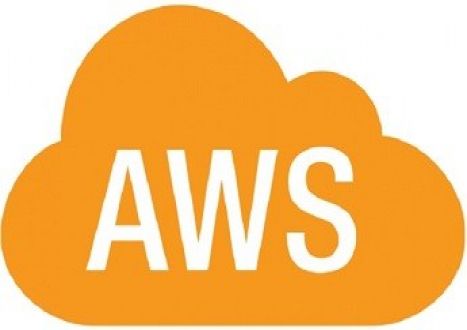
Top Amazon Certification Exams
- AWS Certified Solutions Architect - Associate SAA-C03
- AWS Certified Solutions Architect - Professional SAP-C02
- AWS Certified AI Practitioner AIF-C01
- AWS Certified Cloud Practitioner CLF-C02
- AWS Certified Machine Learning Engineer - Associate MLA-C01
- AWS Certified DevOps Engineer - Professional DOP-C02
- AWS Certified Security - Specialty SCS-C02
- AWS Certified Data Engineer - Associate DEA-C01
- AWS Certified Developer - Associate DVA-C02
- AWS Certified Advanced Networking - Specialty ANS-C01
- AWS Certified Machine Learning - Specialty
- AWS Certified SysOps Administrator - Associate
- AWS Certified CloudOps Engineer - Associate SOA-C03
- AWS-SysOps
Site Search:








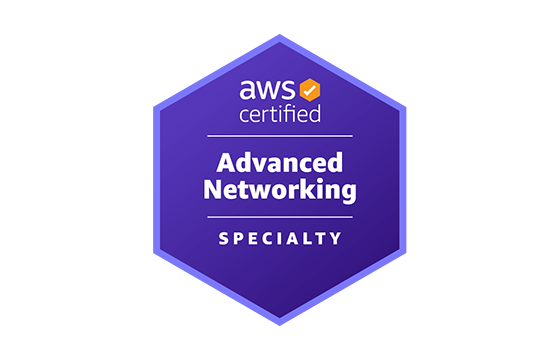



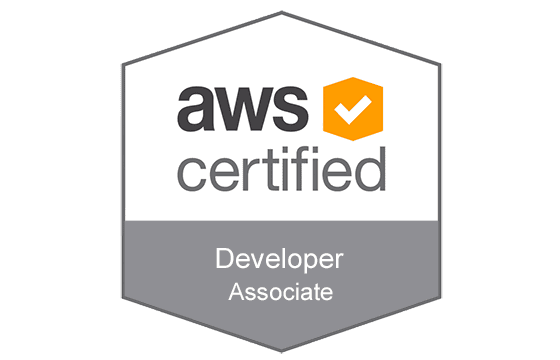
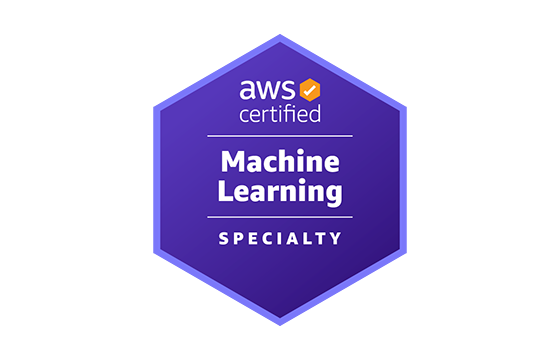

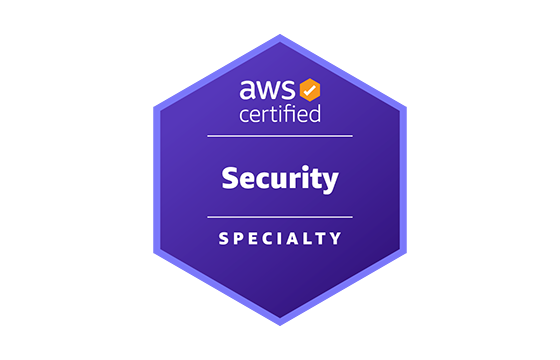
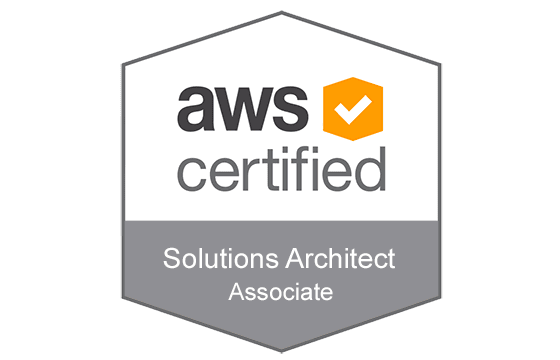
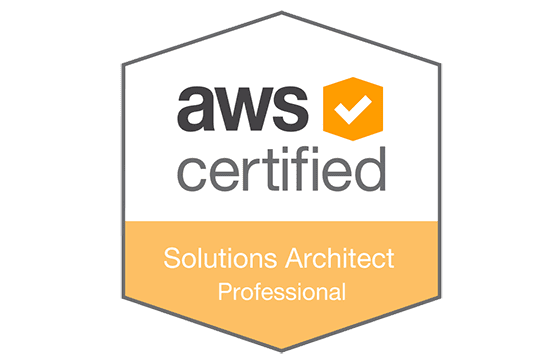
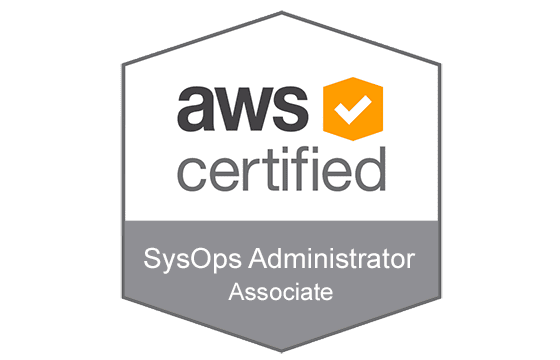
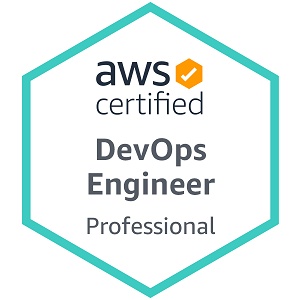



@Mad Belo1, congratulations! Is the premium file word for word with its Q&A's with the ones you saw in the exams?
Passed today!! Test results wont come in until the next 5 days. Premium DUMP is FULLY valid!! Good Luck!!!
The practice questions prepared me very well. I passed.
Passed yesterday 903/1000, also you need study by your self too, due to include new services that AWS launched.
Passed Today, but you must reinforce with your own-training
Premium dumps is valid. only a few new questions, Good luck!
Hello guys, is the premium exam valid? thank you
Please is the AWS Certified Cloud Practitioner Premium still valid
Thanks!
looking for vce simulator. where i can get it.
I am writing the exam next weekend in the US, is the prep4sure by Abrielle still valid?
Anybody has any update if the premium is valid?
is the premium dump valid??
Just took the exam yesterday friday 13th September. Have to say the exam are like 65 q. This free dump has only 32, from which, i got like less than half of the questions. So it helps, but get the official technical essentials PDF and do some quick labs. It asked a lot about billing, trust advisor and some otehr tools. Just with the PDF its not enough for sure.
Just took the test this morning 24 Aug 2019. I passed. Yes the dump is valid. You still need to study. Know the cost estimations. Know what services bring what benefits.
Its valid?
Hello, Please confirm this dump for AWS Cloud Practitioner (32q free and 65q Premium) is valid?
Is this dump still valid in the uk?
any practitioner dumps available?
Please share....
Preparing for aws cloud practioner exam
Please share the AWS cloud Practioner exam dumps
is this already available?
AWS Certified Cloud Practitioner
Where can I put hase practioner aws exam?